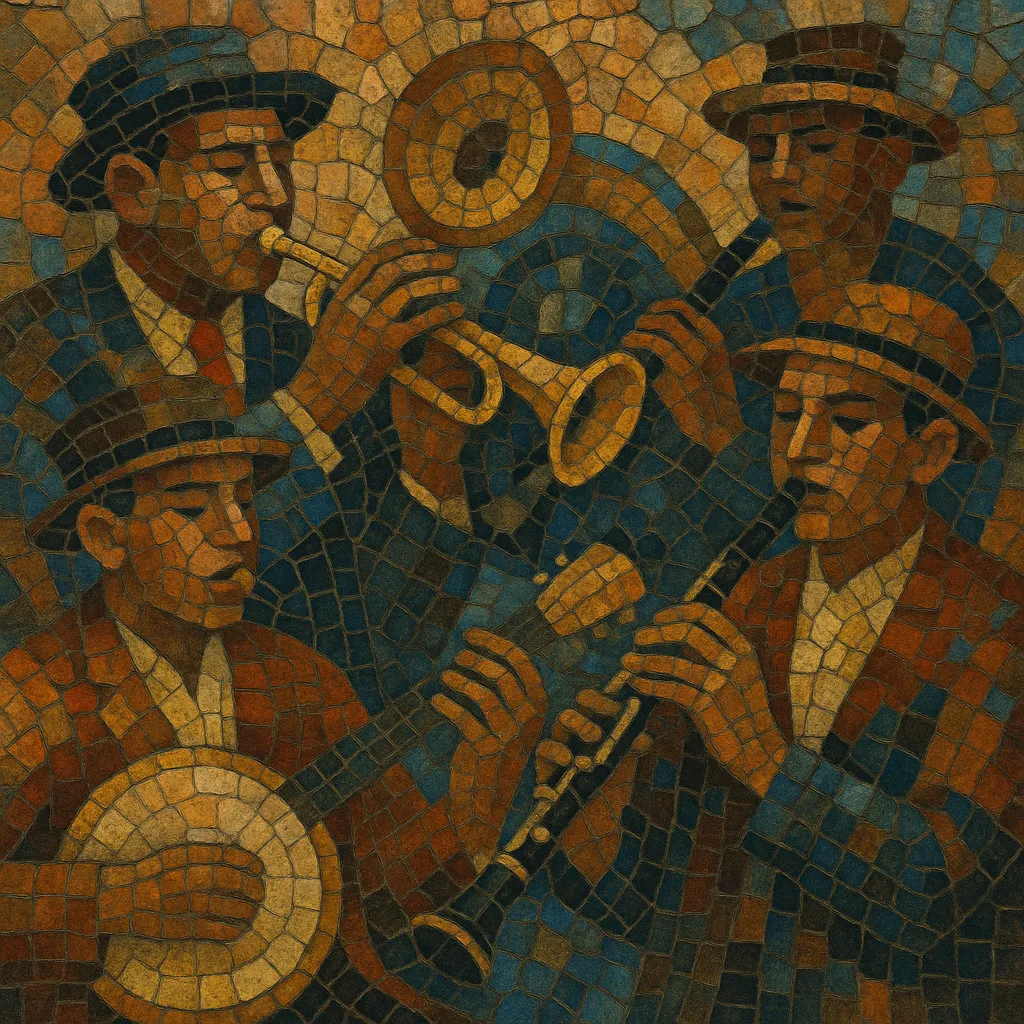Dixieland is one of the earliest forms of jazz, crystallizing in New Orleans in the 1910s and spreading to Chicago and New York in the 1920s. It is characterized by collective improvisation, where the front line—trumpet or cornet carrying the melody, clarinet weaving countermelodies, and trombone providing "tailgate" harmonies and slides—creates a lively polyphonic texture over a buoyant two-beat feel.
Its rhythm section often features banjo or piano, tuba or string bass, and drums playing parade-derived press rolls and stop-time figures. Harmonically it draws on functional tonality (I–IV–V with frequent secondary dominants), and structurally it favors 12-bar blues, 16-bar strains from ragtime, and 32-bar AABA song forms. Repertoire includes marches, blues, spirituals, popular songs, and Creole dances, rendered with a brassy, celebratory sound that evokes the New Orleans brass band tradition.
Dixieland emerged in New Orleans from the interplay of African American blues and spirituals, ragtime piano traditions, Creole dance music (including the habanera), and the city’s brass band culture. Street parades, funerals with second-line rhythms, and dance halls provided the crucible where collective improvisation and a two-beat, march-inflected feel coalesced into an identifiable style.
The Original Dixieland Jass Band’s 1917 recordings popularized the sound nationwide, though African American bands in New Orleans had already forged the idiom. The Great Migration carried musicians north to Chicago, where King Oliver’s Creole Jazz Band and a young Louis Armstrong elevated the art with more sophisticated harmony, phrasing, and soloistic intensity. Jelly Roll Morton codified much of the repertoire and arranging practice, balancing ensemble polyphony with breaks, stop-time passages, and featured solos.
As the 1920s progressed, the music shifted from strict two-beat toward a four-beat swing pulse, with stronger emphasis on individual soloing—foreshadowing the Swing Era. While big bands and later bebop would transform jazz language, Dixieland’s collective counterpoint, repertoire, and parade-derived energy remained a living tradition, especially in New Orleans and Chicago.
The Traditional Jazz revival in the U.S. (Lu Watters, Turk Murphy, Eddie Condon) and the U.K. (Chris Barber, Acker Bilk, Kenny Ball) brought Dixieland to new audiences, influencing British skiffle and popular music. Preservation Hall in New Orleans (est. 1961) helped sustain elder masters and transmitted the style to new generations.
Today, Dixieland thrives in festival circuits, educational programs, and New Orleans venues, preserving ensemble polyphony, parade rhythms, and a communal, celebratory performance practice that underpins much of jazz’s subsequent development.


